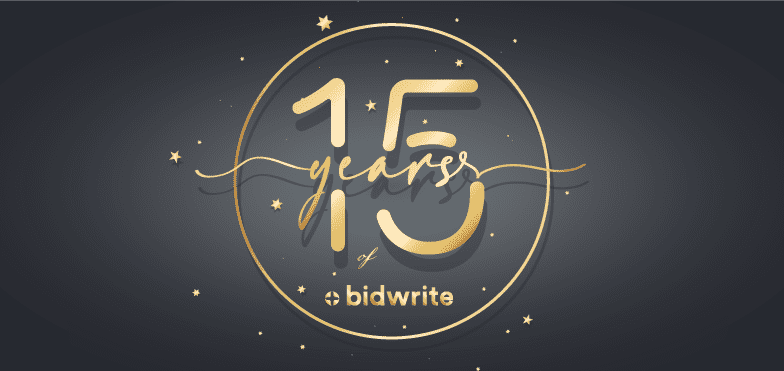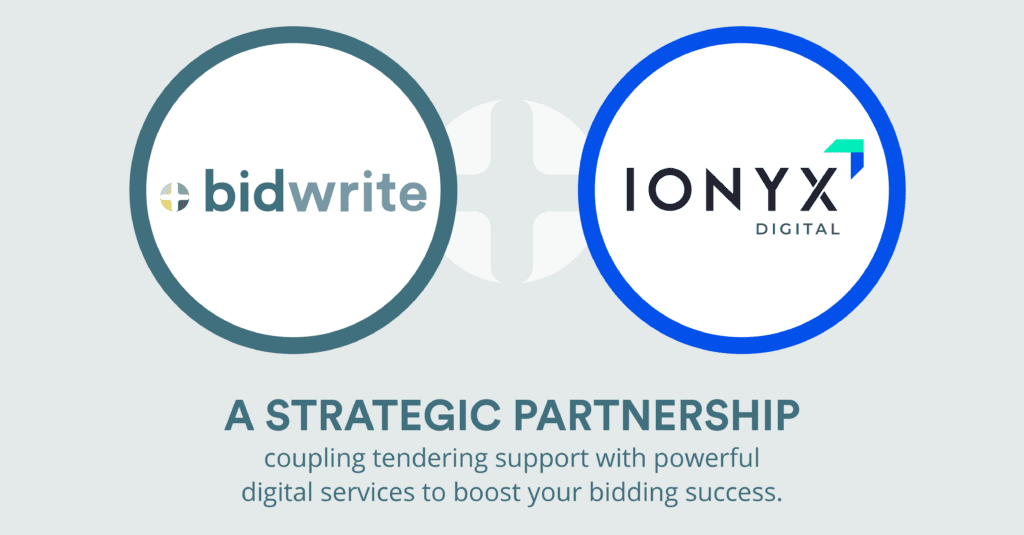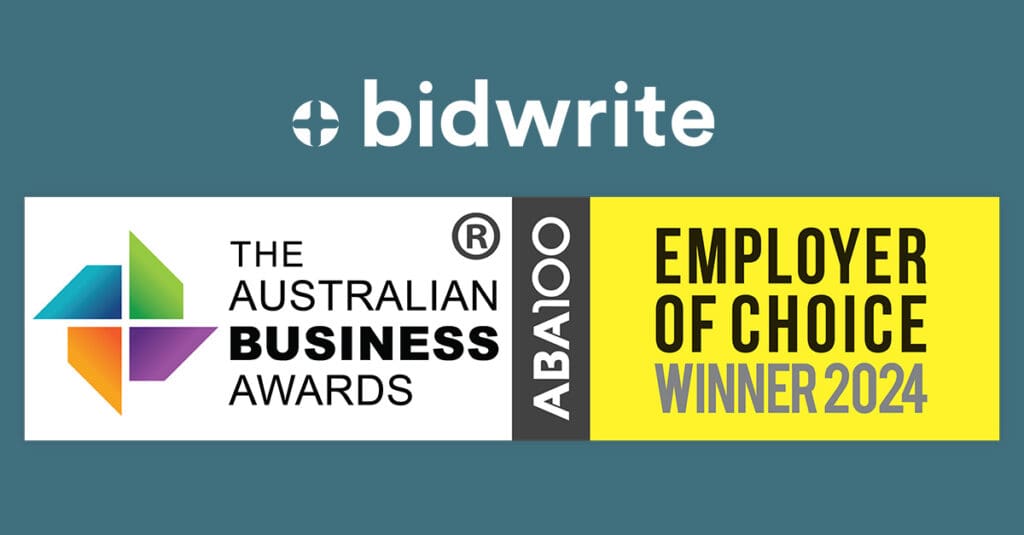By BidWrite Co-Founders David Lunn and Nigel Dennis
From humble beginnings to the best in bidding
August 2023 marks fifteen years since the BidWrite business was born. As with any birthday, anniversary, or milestone, this presents a great opportunity to reflect.
When creating BidWrite in 2008, we were just two blokes working from clunky desktop computers in a home office in Perth. But we saw a unique opportunity to combine our complementary bid response and procurement expertise. We knew that a well-rounded view of tendering would help people win more, and buy better.
Within two years we’d grown to a team of five. And after fifteen years, BidWrite now boasts an award-winning team of 31 staff. Our focus has sharpened firmly on the selling side but is still informed by contemporary procurement perspectives. Now spread over four locations (Perth, Melbourne, Brisbane and New Zealand), there are no clunky desktops in sight – instead we’re harnessing modern technology that enables connection and collaboration across our geographic spread.
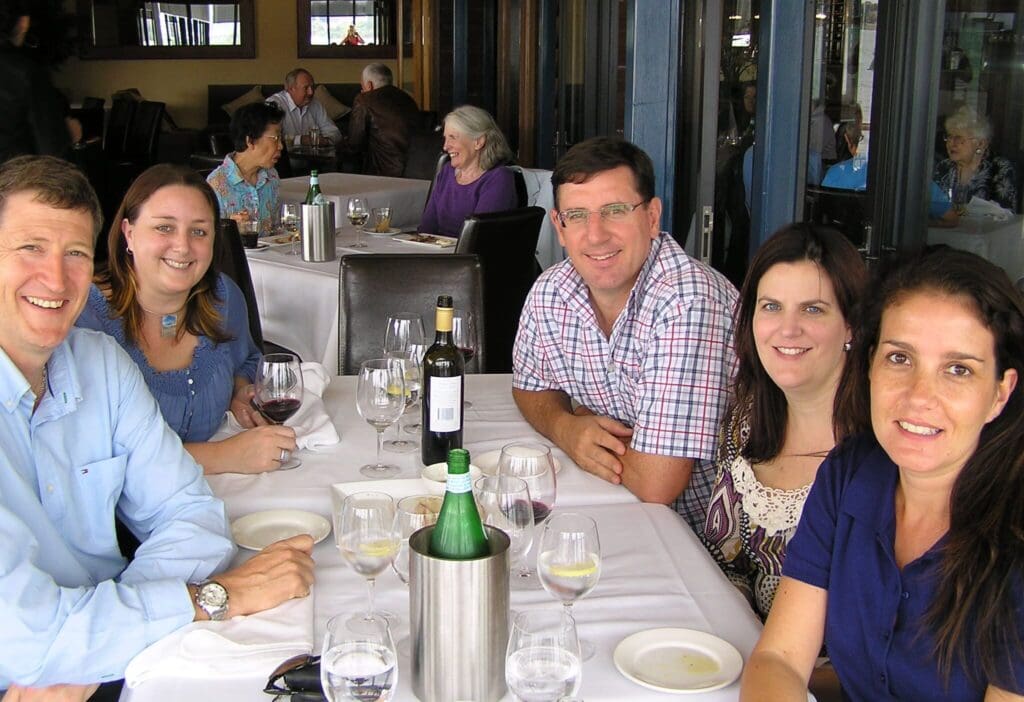
BidWrite Co-Founders David Lunn (left) and Nigel Dennis (centre) with their first three staff members in December 2010.
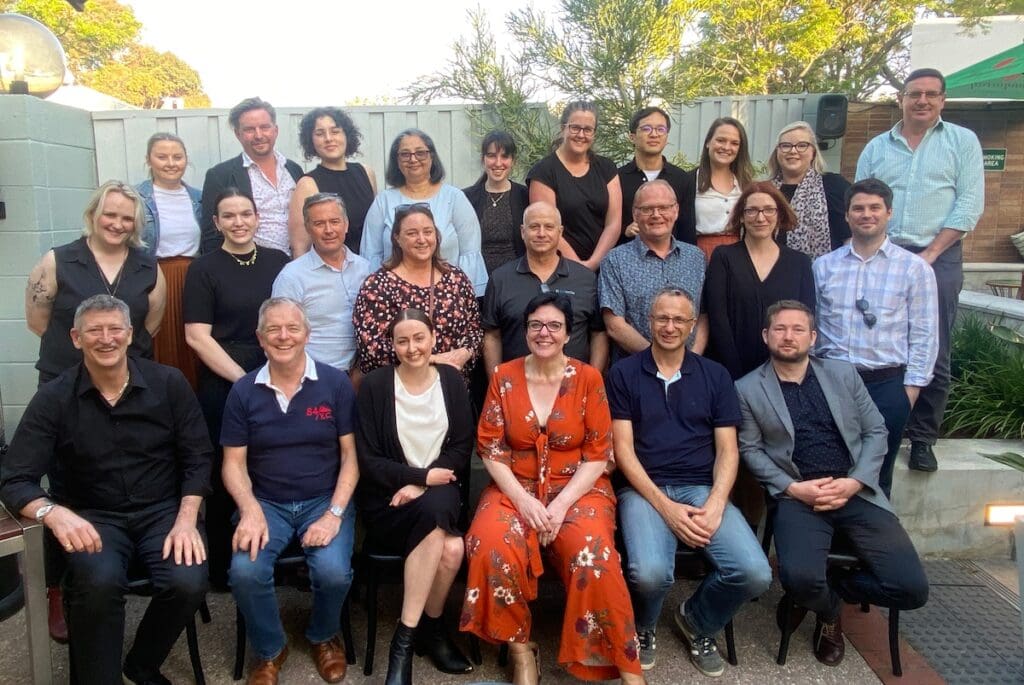
BidWrite Co-Founders David Lunn (bottom left) and Nigel Dennis (top right) with their notably larger team of staff in October 2022 (and it’s grown even further since then)!
As the two of us take a walk down memory lane, we’re reflecting not only on how BidWrite has grown into what it is today, but also how the tendering industry itself has evolved. Let’s take a look at some of the industry changes we’ve embraced along the way.
Prospering procurement and proposal professions
Fifteen years ago, procurement was still an emerging profession. On the buying side, the Chartered Institute of Procurement & Supply’s (CIPS) presence in Australia was relatively new. On the selling side, the proposal writing profession was also still in its infancy and the ANZ Chapter of the Association of Proposal Management Professionals (APMP) didn’t yet exist. So we created it.
Today, the bidding profession is proudly gaining traction in our region. The APMP ANZ Chapter has grown to become the fourth largest of 28 chapters across the globe. While procurement’s struggle for professional recognition continues, at least it’s now a mainstream career choice.
Interestingly, the procurement and proposal management professions are both facing similar challenges, as they evolve from a transactional support role to one of strategic advisory – recognising the core contribution both vocations make to organisational success.
Tendering transformed by technology
In 2008, our office server required us to back data up onto floppy discs and take them home. ‘The Cloud’ was something rain came from and a common way to share client files was to physically exchange floppy discs or print and photocopy documents.
Fast-forward fifteen years and everything is online. Office 365 and a range of other apps can solve almost any problem you have, and ‘The Cloud’ refers to servers with more data going in than raindrops have ever poured out.
Collaboration has also become remarkably easy, particularly in a post-COVID world. Not too long ago, it was commonplace for collaboration to happen in a tendering ‘war room’, a dedicated office set up for bid teams to sweat it out together, often with late-night pizza orders.
Today, we can collaborate on documents using tools like SharePoint, making it particularly helpful for bidding teams spanning multiple locations or even different countries. Video conferencing tools like Zoom or Microsoft Teams mean we can gather troops from across the globe and hold meetings virtually. The only sweating done is during a frantic fumble for the unmute button. If you have to work overtime, scoffing pizza has been replaced with binging from your own refrigerator given we can work from home (and thankfully mental health in the bidding profession is more widely recognised).
Proposal production and simplified submissions
During BidWrite’s beginnings, we printed the majority of tender responses, with hard copies bound and hand submitted to a physical ‘tender box’. Online procurement portals did exist but were very much a speck on the horizon. Tender production meant days of work, ordering elaborate folders in advance, carefully curating cover pages to slot into the outside sleeve, and checking you had a back-up printer, the right sized paper and enough toner to cover any eventuality. Collation could take days and required a bench the size of a small factory.
In 2023, tender production means mastering Microsoft Word styles, stitching PDF documents together, and bookmarking key sections – all with a few clicks. Electronic tender submission is the norm as procurement portal submissions, with all their foibles, dominate almost every industry we work in. In fact, hard copy submissions are so few and far between that our consultants get excited by the novelty of a physically printed response.
Social, sustainable, sophisticated sourcing
Back in 2008, procurement of goods and services involved single or multi-stage sourcing events, using various types of invitation/request documents. Sourcing technology was new but rapidly maturing. Reverse auctions were in full swing and a shift towards e-procurement platforms and automating low value procurement were high on Chief Procurement Officer’s agendas. Corporate social responsibility obligations were gaining traction – but evaluation and decision making was mostly framed around ‘cheapest technically compliant’.
Now, most procurements (and subsequent contract management activities) take place inside of sophisticated technology platforms, The quality of most RFT and RFP documents has, thankfully, dramatically improved. Suppliers have numerous electronic relationships with buyers and we’re seeing more human interaction occurring throughout the sourcing process – rather than just pitch and presentation interactions after the bids are submitted.
Risk mitigation and non-technical factors like environmental, social and governance (ESG) commitments and undertakings feature much more substantially in sourcing decisions. When it comes to decision time, trust (and its three drivers: authenticity, logic, and empathy) is higher on the agenda. We still see ‘cheapest technically compliant’ but quantified value has more weight, except in true commodity-based procurements.
So where to from here?
Enough looking backwards. What does the future hold for both sides of the buying and selling equation? Here’s what we see…
Competitive tendering is sure to continue. Larger organisations will always need to prove that goods and services are being effectively and efficiently purchased by soliciting offers from multiple competing providers. So BidWrite’s consulting services will remain in high demand. But the tendering process will change, as both the procurement and bidding professions continue to embrace rapidly evolving technology.
On the buying side, we expect to see less one-off, complex, competitive RFTs – in favour of more ongoing, performance-based contracts and panels. This will increasingly blur the boundaries between customer and supplier relationship management. Genuine personal interaction (far beyond typical presentations and negotiations) will increasingly dominate sourcing decisions. But AI technology can’t be ignored. As a first step, we envisage AI being used to eliminate lower value and lower complexity transactional activity, while also powering better information visibility.
On the bidding side, we foresee organisations working ever more closely with buyers through the various stages of the tendering process to secure better outcomes for all. More strategic sellers are realising that proactively preparing for and influencing RFTs ahead of their release is where bids are often won (or lost). As a result, we’re seeing them ‘left-shift’ their way to more strategic positioning efforts, long before the open period. We believe this will become a more crucial element of winning contracts.
We also predict that generative AI technology and machine learning models will replace much of the basic, labour-intensive work in bidding. This will elevate the strategic nature of a specialised bid professional’s role, by allowing them to spend more of their time on the valuable human elements of tendering that they do best.
And where to for us?
Just as our profession never rests, neither will BidWrite and our plans to be “the best at all things bidding”.
We’ll add to our growing portfolio of capture and pre-bid support packages, long term client engagement plans and bid response training offerings via Bid Academy.
We’ll push further and faster on creating strategic partnerships with hand-picked providers who share our vision of technology and tendering professionals working together.
We’ll keep striving to help bidding professionals gain the respect they truly deserve from both companies they may work for and broader industry.
And of course, we’ll continue to contribute our bidding expertise to chalk up many more wins for our expanding client base across Australia, New Zealand and increasingly further afield.
In keeping with BidWrite’s first fifteen years of business, we therefore look forward to embracing the changes, challenges and opportunities that our industry and evolving technology presents – for many more years to come.
